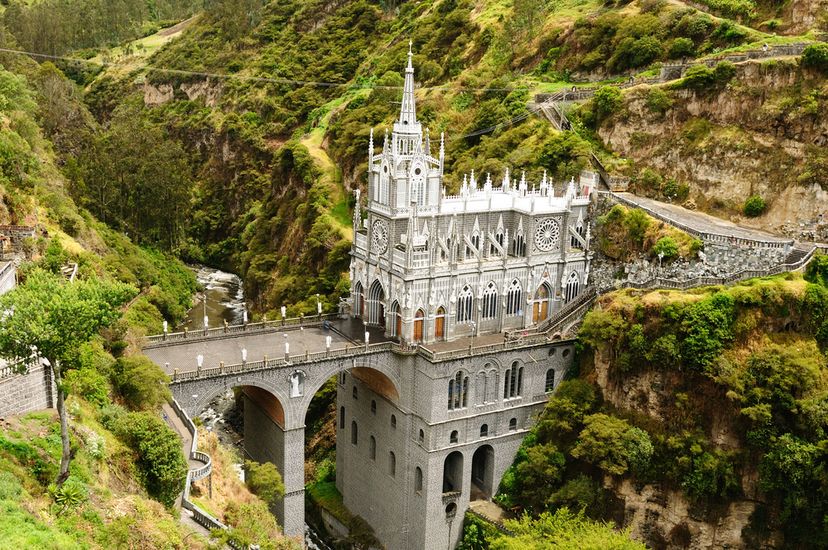
While churches are regarded primarily as places of worship, they have also been long treated throughout history as the centers of cultural and social activity within a community. This especially rings true of the hundreds of centuries-old parishes, cathedrals and basilicas scattered around the world that today stand testament to not only the religious commitment of worshipers, but also to the social and artistic progression of our civilization. Ranging from medieval Gothic Cathedrals to rare Expressionist Parishes, and whether with religious or artistic inclination, here are 10 churches worth checking out (and gawking over!) on your next international adventure.
Advertisement
10. St. Augustine Church, Philippines
This active parish was built of coral stone and bricks in 1717 and can be found in Paoay, Ilocos Norte in the Philippines. Commonly known as Paoay Church, the building is also an example of “Earthquake Baroque,” which, exactly as it sounds, is an architectural term coined to describe the modified Baroque-style rebuilding in places that experienced destructive earthquakes in the 17th and 18th centuries. The most noticeable characteristic of this style is the use of large buttresses on the back and sides of the building (which can be seen at Paoay Church at about 5.5 ft thick) to guard against future earthquake destruction. Also making this site unique is the adjacent coral bell tower, built in 1793 and rising 3-storeys above ground level, used historically as an observation post in several conflicts.
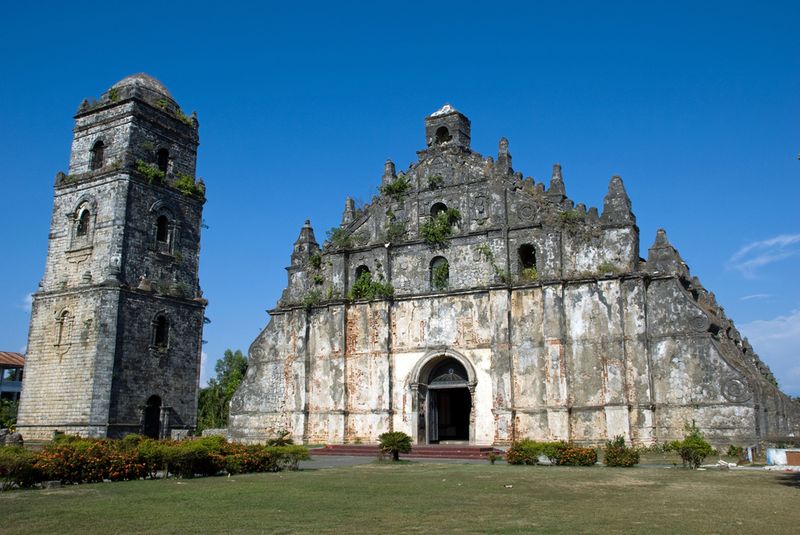
9. Salzburg Cathedral, Austria
The site of this Roman Catholic Cathedral in Salzburg, Austria has endured centuries of fires, reconstructions and consecrations (774, 1628 and 1959) with the current building displaying a stunning example of early Baroque architecture designed by Santino Solari. The majestic exterior is quite a sight to behold as it rises above the Old Town cityscape, but it is the interior that is truly awe-inspiring, with the sepia-and white walls adorned by murals, a 4,000-pipe main organ and cathedral portals made my Scheider-Manzell, Mataré and Manzu. Also to be found here are Mozart’s baptismal font, and an exhibition of the excavation of the old, Romanesque cathedral.
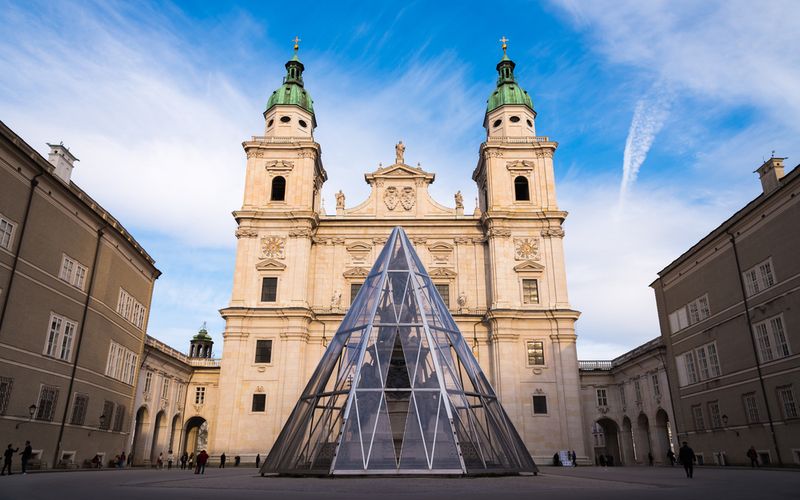
8. Bedkhem Church, Iran
Also known as Bethlehem Church and Beyt Lahm Church, this Armenian Apostolic Church was built in 1627 in the Isfahani architectural style (traditional Persian-Iranian). Located in the Julfa quarter of Ishafan, Iran, it was built by Armenian merchant Khaje Petros, to whom an inscription is now found on the south portal of the structure. Though famous for its gilded domes and historic architecture, it is the 72 paintings found within that account for the exquisite beauty of the church, depicting the life of Christ in two rows of masterpieces by notable Armenian artists.
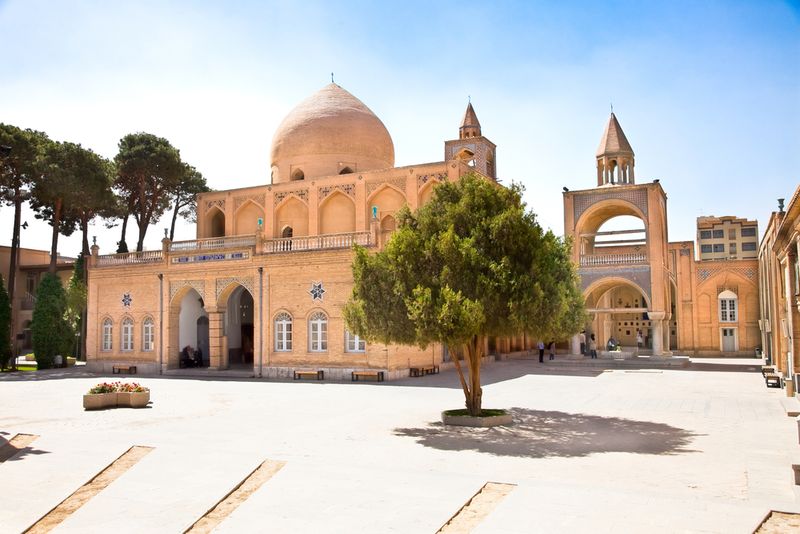
7. Kizhi Pogost, Russia
Located on a narrow island strip on Lake Onega, Kizhi Pogost, known alternatively as the Church of Transfiguration, is a 37 meter tall structure made entirely of wood, using scribe-fitted horizontal logs joined with interlocking corners (no nails!). The alter was laid in 1714, after the previous church here was struck by lightning, with the updated design providing more efficient ventilation and contributing to its preservation till this day. There is also an aura of legend around the site, with rumor stating that the head builder used only one axe for the entire project, and upon completion chucked it into the lake, exclaiming, “there was not and will not be another one to match it.”
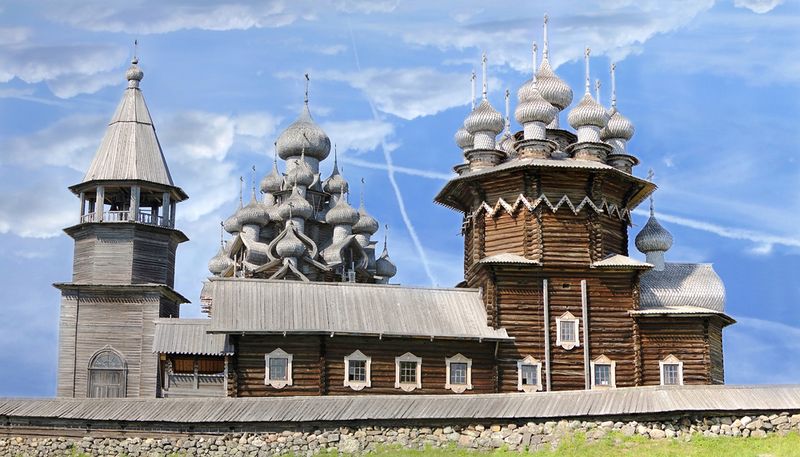
Advertisement
6. Grundtvig’s Church, Denmark
This amazing example of Expressionist architecture created by chief architect Peder Vilhelm Jensen-Klint and completed by his son, Kaare Klint in 1940 is a Lutheran Church built to commemorate the Danish priest, poet and reformer N.F.S. Grundtvig. Located in the Bispebjerg district in Copenhagen, the most notable exterior feature is the west façade, standing 49 meters tall and resembling the exterior of a church organ. Also quite famous is the interior, which with high, vaulted ceilings and simplistic décor, evokes an atmosphere of tranquility despite the size of the space and the imposing design of the outer façade.

5. St. Stephen’s Basilica, Hungary
As Budapest’s largest church, St. Stephen’s Basilica can hold up to 8,500 people simultaneously, and provides a panoramic view of the city from the Cupola. A prime example of Neoclassical architecture, the building took over 5 decades to complete, (due primarily to political conflict and structural issues) and changed builders several times before being completed in 1906 by Jozsef Krauser. The ornate interior is truly a site to behold with stained glass windows designed by Miksa Roth and a considerable amount of frescoes, statues and mosaics throughout. Also to be seen here is the “most precious treasure of Hungary,” the mummified right fist of King Stephen, for whom the Basilica is named.

4. Sagrada Familia, Spain
This “Expiatory Temple of the Holy Family” occupying a 12,800 square meter plot of land in the center of Barcelona remains incomplete till this day. Initial construction began on St. Joseph’s day (March 19) in 1882 under architect Francisco de Paula del Villar y Lozano who later resigned due to disagreements and passed the project to Antoni Gaudi. Gaudi’s vision for the Temple, besides being a place of worship was to “artistically represent the truths of religion and the Glorification of God and His Saints” a concept clearly explored when he abandoned the previously drafted Neo-Gothic design in favor of a more “monumental” design of his own innovation. We see it today in the symbolism of the structure, with each of the 18 towers specifically representing Christ, the Gospels, the Virgin Mary and the 12 Apostles, and the verticality of the structure itself representing elevation towards God.
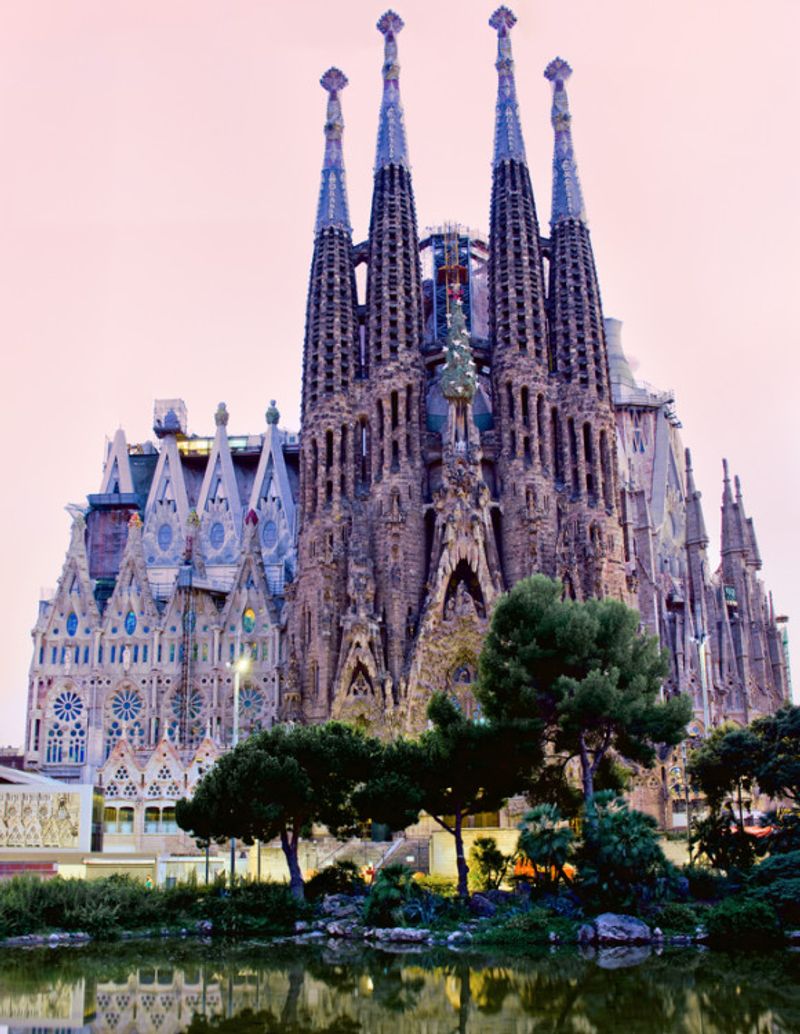
3. Milan Cathedral, Italy
This spectacular architectural feat standing 108.5 meters tall took over 500 years to complete, and was the life work of many architects, master builders and financial backers. Originally commissioned by bishop Antonio da Saluzzo in 1385 and funded by 1st Duke of Milan, Glan Galeazzo Visconti, who had visions of creating the largest church in the world (he wasn’t far off, it is currently the 2nd largest Gothic cathedral in the world), the cathedral was consecrated in 1418 when the nave was undergoing just the beginnings of construction. Today, after several restorations and final additions, the structure is amazingly uniform in its Gothic design, with nave columns reaching 24.5 meters in height and the some 135 spires linked with flying buttresses. The Cathedral is adorned with about 3,400 statues, progressing in style from Gothic to Art Deco, and public access is available to the rooftop providing unparalleled views of the surrounding city.
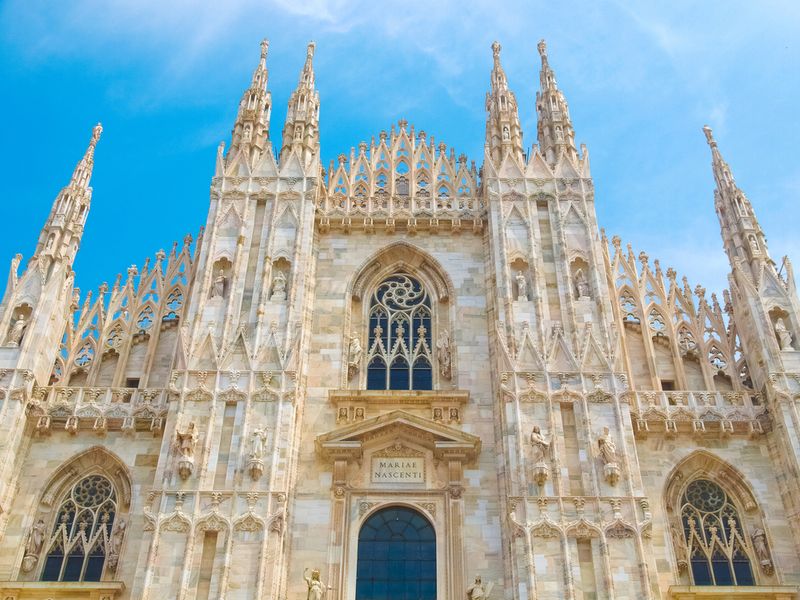
2. Westminster Abbey, England
While this is undoubtedly one of Europe’s most famous historical attractions, it is also one of the world’s best examples of Medieval Gothic architecture, albeit with an English twist. This is most evident in the intricacies of the northern façade (tourist entrance) and in the extremely expansive vaulted ceilings of the interior (the highest Gothic vault in England, at 102 ft) made to look even taller by narrow single aisles. Today, the Abbey is neither a Cathedral nor a parish church (as it had been throughout history) but rather a “Royal Peculiar” subject only to the Sovereign, and is the site of every British coronation since 1066 as well as the final resting place of a number of notable historical figures.
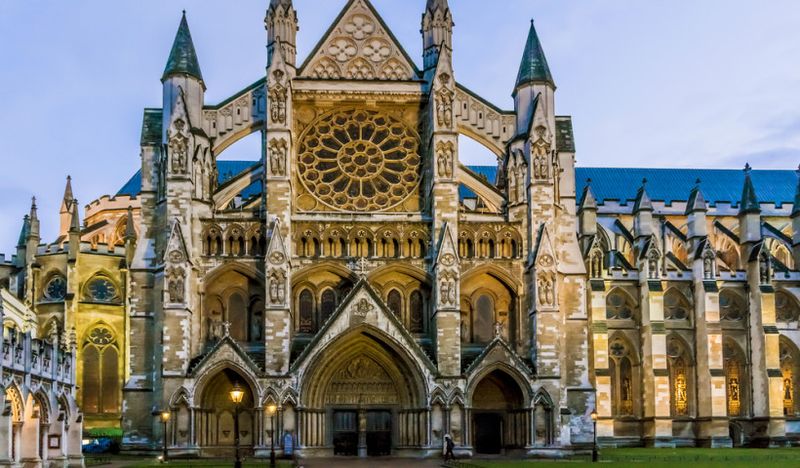
Advertisement
1. Las Lajas Sanctuary, Colombia
Rising 100 meters above the bottom of the Guaitara River Canyon, near Nariño, Ipiales in Colombia, the Gothic revival basilica—which is built in-to the rocky cliff on one side, and connects via bridge to the opposite side—looks more like the inspiration for a Disney castle than a Sanctuary. The present day structure was built from 1916-1949, with a history dating back to 1754 when, during a storm, Maria Muences’ deaf-mute daughter exclaimed that she saw a vision of the Virgin Mary over the “laja” (name for flat sedimentary rock similar to shale) after-which she was cured of her afflictions. The first shrine to the “Lady of Las Lajas” was built at this site in the 18th Century and has since been upgraded to what we see today. The sanctuary was authorized by the Roman Catholic Church in 1951 and declared a minor basilica 3 years later.
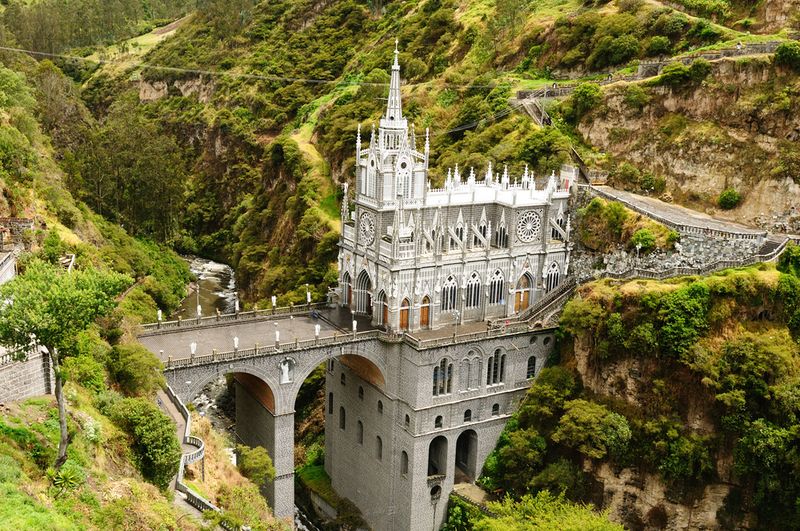
Advertisement